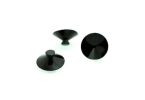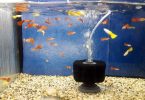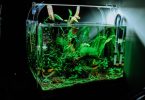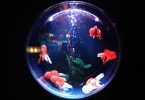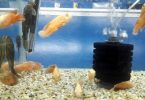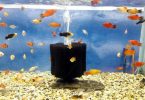Table of Contents
An air pump is a common piece of equipment in many aquariums, used to provide oxygen to the fish and other aquatic creatures. However, not all fish require an air pump to survive and thrive. In fact, some fish may even be negatively impacted by the use of an air pump. In this article, we’ll explore the world of aquarium fish that don’t require an air pump, discussing their unique characteristics and needs.
We’ll also provide tips on how to maintain a healthy and comfortable environment for these fish, so you can enjoy their beauty and personality without the need for additional equipment.
Whether you’re a seasoned aquarium owner or new to the hobby, read on to discover the world of aquarium fish that don’t require an air pump.
Understanding Aquarium Fish Needs
Before we dive into the specific fish species, it’s crucial to understand the basic needs of aquarium fish. Fish require a suitable environment to thrive, which includes proper water temperature, pH level, filtration, and oxygenation.
While air pumps can help increase oxygen levels in the water, some fish have adapted to low-oxygen environments and can extract oxygen from the surface without the need for additional aeration. These fish have evolved unique characteristics that allow them to survive in such conditions.
Fish Species That Don’t Require Air Pumps
1. Betta Fish
One of the most popular and stunning aquarium fish is the Betta fish, also known as Siamese fighting fish. With their vibrant colors and flowing fins, Betta fish are a sight to behold.
These magnificent creatures are native to the rice paddies and slow-moving streams of Southeast Asia, where oxygen levels can be low.
Characteristics and Care:
Betta fish possess a unique labyrinth organ, allowing them to take gulps of air at the water’s surface. This adaptation enables them to survive in oxygen-deprived environments, making air pumps unnecessary for their tanks. However, this doesn’t mean you should neglect other aspects of their care.
Keep your Betta fish in a tank that holds at least five gallons of water. They are tropical fish and thrive in temperatures between 75°F and 80°F (24°C to 27°C).
Regular water changes are crucial to maintaining water quality, as they are susceptible to ammonia and nitrite toxicity.
Consider adding live plants to the tank; not only do they add natural beauty, but they also help to improve water quality and provide hiding spots for your Betta.
Compatibility:
Betta fish have a reputation for being aggressive towards other Betta fish and certain tankmates. It’s best to keep them alone in their tank.
However, you can create a community tank with peaceful, non-fin nipping fish like Corydoras catfish or neon tetras, as long as there’s ample space and hiding spots.
2. Goldfish
Goldfish are a classic choice for many aquarium enthusiasts and often bring back nostalgic memories. Contrary to popular belief, Goldfish can thrive in a properly set up tank without the need for an air pump.
Characteristics and Care:
Goldfish come in various shapes, sizes, and colors, and they can grow quite large depending on the species. Common and Comet Goldfish, for instance, can grow up to a foot long or even larger. Due to their larger size and high activity levels, it’s recommended to keep Goldfish in a spacious tank.
Goldfish are cold-water fish, and their ideal temperature ranges from 62°F to 74°F (16°C to 23°C). They are messy eaters and produce more waste compared to other fish, so efficient filtration is essential. A good quality filter will help maintain water quality without the need for an air pump.
Compatibility:
Goldfish are social creatures and thrive in groups. However, you must consider the tank size when keeping multiple Goldfish.
The general rule of thumb is to have at least 20 gallons of water for the first Goldfish and an additional 10 gallons for each additional one. Avoid keeping them with fin-nipping or aggressive fish as tankmates.
3. Guppies
Guppies are one of the easiest and most popular freshwater fish to keep in an aquarium. They are known for their vibrant colors and graceful swimming patterns, making them a favorite among aquarists.
Characteristics and Care:
Guppies are hardy and can adapt to a wide range of water conditions, making them suitable for beginners. They don’t require an air pump as they possess a modified swim bladder called the “labyrinth organ,” enabling them to breathe oxygen directly from the air.
These fish are tropical and prefer water temperatures between 72°F and 82°F (22°C to 28°C). Ensure your tank has a heater to maintain the appropriate temperature. Guppies are active swimmers, so a well-filtered tank is essential to remove waste and maintain water clarity.
Compatibility:
Guppies are peaceful and friendly fish, making them ideal for community tanks. They can coexist with other non-aggressive fish, such as neon tetras, mollies, and platies.
Remember that Guppies breed easily, so be prepared for potential population growth if you have males and females in the same tank.
4. White Cloud Mountain Minnow
The White Cloud Mountain Minnow is a small and peaceful fish native to the streams and rivers of China. They are an excellent choice for aquarists looking to add some activity and beauty to their tank without the need for an air pump.
Characteristics and Care:
These tiny, colorful fish are well-suited for smaller aquariums, making them perfect for desktop setups or nano tanks. They can tolerate cooler water temperatures, ranging from 64°F to 72°F (18°C to 22°C), making them a suitable option for unheated aquariums.
White Cloud Mountain Minnows are not demanding when it comes to water conditions. However, like all fish, they thrive in a well-maintained tank with proper filtration. Despite their small size, they are active swimmers, so provide them with plenty of open swimming space.
Compatibility:
White Cloud Mountain Minnows are peaceful and get along well with other non-aggressive fish. They are schooling fish, so it’s best to keep them in groups of five or more for their well-being.
Other small, peaceful species like Cherry Barbs and Harlequin Rasboras make excellent tankmates for these charming minnows.
Factors to Consider When Choosing Fish
Selecting the right fish for your aquarium is crucial to creating a thriving aquatic environment. Here are some essential factors to consider when choosing fish that don’t require an air pump:
- Oxygen Requirements: Some fish species have adapted to low-oxygen environments, allowing them to thrive without the need for additional aeration. These fish often possess unique physiological characteristics that enable them to extract enough oxygen from the water surface.
- Swimming Patterns: Certain fish are more sedate swimmers and don’t create as much water disturbance as others. Choosing fish with calm swimming patterns can help maintain sufficient oxygen levels without the need for an air pump.
- Bioload: The bioload refers to the waste produced by the fish in the form of uneaten food and feces. Fish with lower bioloads produce less waste, reducing the risk of oxygen depletion in the water.
- Tank Size: The size of your aquarium matters when it comes to oxygen levels. A larger tank generally has a larger water surface area, which facilitates better gas exchange and helps keep oxygen levels stable.
- Aquarium Plants: Live plants play a vital role in aquarium ecosystems as they release oxygen through photosynthesis. Having a well-planted aquarium can contribute significantly to maintaining suitable oxygen levels.
- Water Filtration: Efficient filtration is essential for removing debris and maintaining water quality. A clean tank promotes healthier fish and reduces the need for additional aeration.
Benefits of Air Pump-Free Aquarium
Now that we’ve considered the factors for choosing fish, let’s explore the numerous benefits of maintaining an air pump-free aquarium:
- Silence is Golden: One of the most significant advantages of not using an air pump is the tranquility it brings to your living space. Without the constant hum of the air pump, you can enjoy a peaceful and relaxing atmosphere.
- Energy Efficiency: Air pumps require electricity to operate, and keeping them running 24/7 can add to your utility bills. Opting for an air pump-free setup reduces energy consumption, making your aquarium more cost-effective in the long run.
- Cost Savings: Besides lower energy costs, not having an air pump means you won’t need to purchase the pump itself and any associated accessories. This can result in significant cost savings, especially if you’re on a budget.
- Less Equipment to Maintain: Air pumps, like any other aquarium equipment, require regular maintenance. By eliminating the air pump from your setup, you’ll have one less piece of equipment to clean and maintain, simplifying your aquarium care routine.
- Natural Aesthetic: Without air bubbles disturbing the water’s surface, your aquarium will have a more natural and serene appearance. This unobtrusive setting can enhance the beauty of your fish and aquatic plants, creating a visually appealing focal point in your home.
- Fish-Friendly Environment: While air pumps are necessary in some cases, certain fish species may find the constant bubbling and water agitation stressful. An air pump-free setup provides a calmer environment, which can be beneficial for many fish, especially those from slow-moving habitats.
Potential Challenges and Solutions
As with any aquarium setup, there can be challenges when maintaining an air pump-free aquarium. However, most of these challenges have straightforward solutions:
- Oxygen Levels: Without an air pump, it’s essential to monitor oxygen levels regularly. Invest in a reliable aquarium thermometer and oxygen test kit to ensure your fish have a healthy environment. If you notice any decline in oxygen levels, consider adding more live plants to boost oxygen production.
- Water Circulation: In the absence of an air pump, you may encounter issues with water circulation. Dead spots can develop, leading to the accumulation of debris and poor water quality. To address this, choose a filter that provides adequate water flow and position it strategically to promote even circulation.
- Surface Scum: Without air bubbles breaking the water’s surface, you might notice an accumulation of surface scum caused by protein and other organic compounds. Regularly skimming the surface and performing partial water changes can help keep the water clean and clear.
- Temperature Regulation: Air pumps can contribute to water cooling due to increased surface agitation. In an air pump-free setup, the water temperature might rise slightly. To maintain a stable temperature, consider using a heater with a thermostat to control the water’s warmth.
- Fish Selection: Not all fish thrive in an air pump-free environment. Research the fish species you’re interested in and ensure they are compatible with this type of setup. Fortunately, many popular aquarium fish, such as bettas, gouramis, and certain tetras, are well-suited for air pump-free tanks.
Conclusion
Creating an air pump-free aquarium is not only feasible but also an excellent choice for many fish species. Fish like bettas, goldfish, guppies, and White Cloud Mountain Minnows have unique adaptations that allow them to thrive in oxygen-deficient waters.
By understanding the needs of these fish and carefully considering factors such as tank size, water parameters, and compatibility, you can create a thriving and visually stunning aquarium without the need for an air pump.
Remember to stay attentive to your fish’s well-being and provide them with a suitable environment to live their best lives. With a bit of knowledge, care, and creativity, you can enjoy a captivating underwater world right in the comfort of your home.
So go ahead and dive into the fascinating hobby of aquarium keeping, knowing that you can make a wonderful home for these air pump-free aquatic companions!


